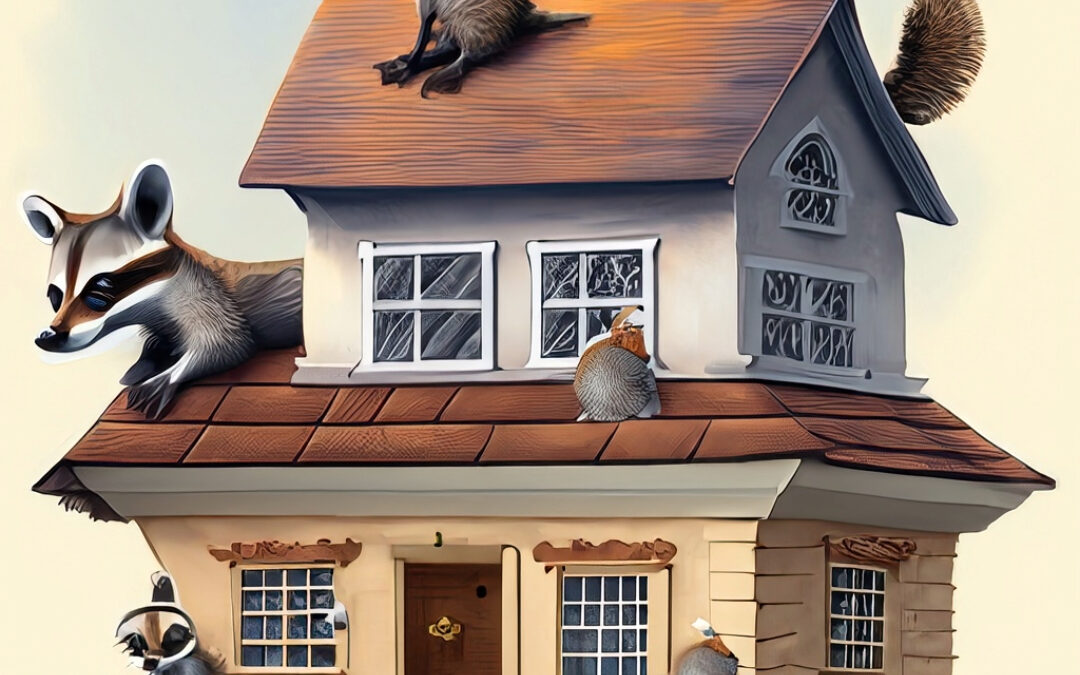In the realm of pest control, there’s more to safeguarding your home than just eliminating the pests that have already made their way inside. At Cypress Critters and Pests, we think Prevention is always better than cure, and that’s where the principle of “Animal Exclusion” comes in. This article dives into the concept of animal exclusion, why it’s crucial in the pest control business, and practical steps to ensure your home remains free from unwelcome wildlife intruders.
What is Animal Exclusion?
At its core, animal exclusion is the practice of preventing wildlife and pests from entering your property in the first place. Rather than focusing solely on exterminating pests or removing animals once they’ve invaded, exclusion emphasizes fortifying your home to stop these creatures from gaining access. This proactive approach not only reduces the chances of pest infestations but also ensures a safer and healthier living environment.
Why is Animal Exclusion Important in Pest Control?
- Long-term Solution: While trapping and removing animals provides a temporary fix, exclusion addresses the root of the problem, offering a more permanent solution. Once exclusion measures are in place, they can provide protection for years to come.
- Humane Approach: Exclusion techniques generally avoid harming animals. By preventing access, wildlife is encouraged to move elsewhere, reducing the need for lethal solutions or stressful removal processes.
- Cost-Efficient: Continuous trapping, extermination, or removal of pests can be costly. Investing in exclusion methods can save homeowners money in the long run.
- Reduction in Associated Risks: Pests and wildlife can bring diseases, parasites, and even physical damage to your property. By excluding them, you diminish these risks substantially.
Steps for Effective Animal Exclusion
- Home Inspection: The first step is a thorough inspection of your property. Look for potential entry points like holes, gaps, cracks, or any other vulnerabilities. Pay close attention to areas like the attic, basement, crawl spaces, and the roof.
- Seal Off Entry Points: Once you’ve identified these potential access points:
- Use steel mesh or hardware cloth to cover larger openings, especially in areas like vents or chimneys.
- Caulk and seal any cracks or gaps in your home’s foundation, walls, or windows.
- Repair or replace damaged roofing, ensuring there are no access points for pests.
- Trim Trees and Vegetation: Overhanging branches or dense shrubbery close to your house can provide easy access for pests. Regularly trim these to create a buffer zone around your property.
- Maintain Your Yard: Pests like rodents are attracted to clutter. Regularly clean your yard, removing any debris, woodpiles, or standing water that might attract unwanted wildlife.
- Invest in Chimney Caps and Roof Vents: These are often overlooked but are common entry points for many animals. Invest in high-quality caps and vents that are designed to prevent wildlife entry.
- Ensure Proper Drainage: Ensure that your property has adequate drainage. If water accumulates around your home, it can attract pests and even damage the foundation, creating more access points.
- Use Repellents: There are various natural and commercial repellents available that can deter pests. While they shouldn’t be the primary line of defense, they can provide added protection.
- Regular Maintenance: Animal exclusion isn’t a one-time job. Regularly inspect and maintain your home, ensuring that any new potential entry points are promptly addressed.
Conclusion
Animal exclusion is a cornerstone of modern, humane, and effective pest control. By adopting a proactive stance, homeowners can ensure not only a pest-free living environment but also peace of mind. Instead of dealing with the stresses and potential dangers of a pest infestation, take the time to implement solid exclusion strategies. Remember, prevention is always better than cure, and in the world of pest control, animal exclusion is your best preventive measure.
Call us for a free evaluation and quote! 713-775-1161


